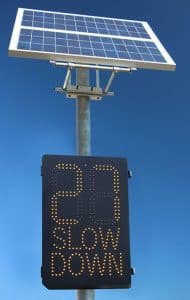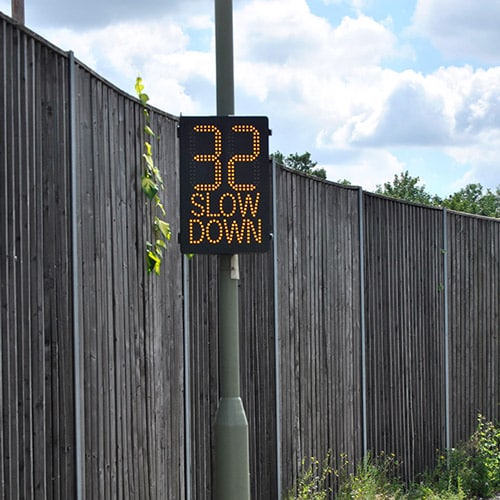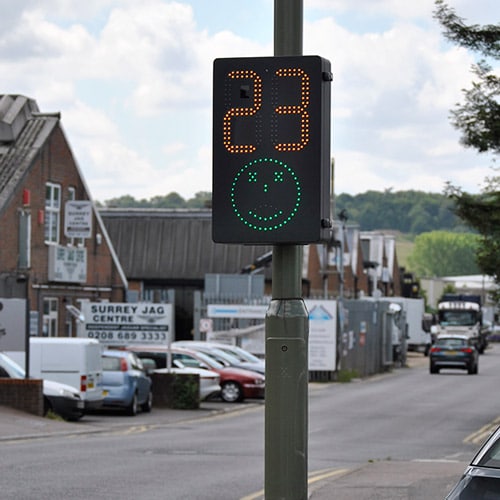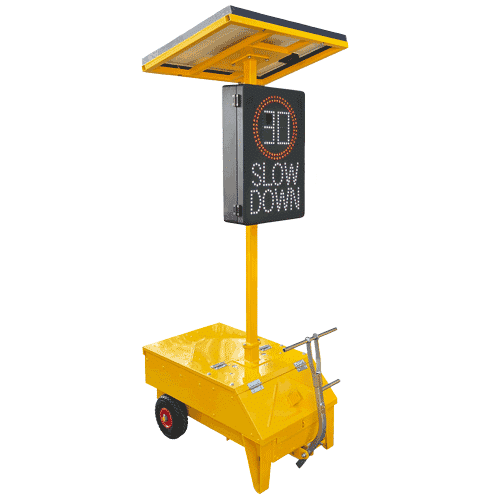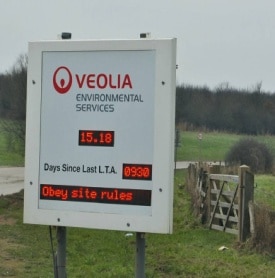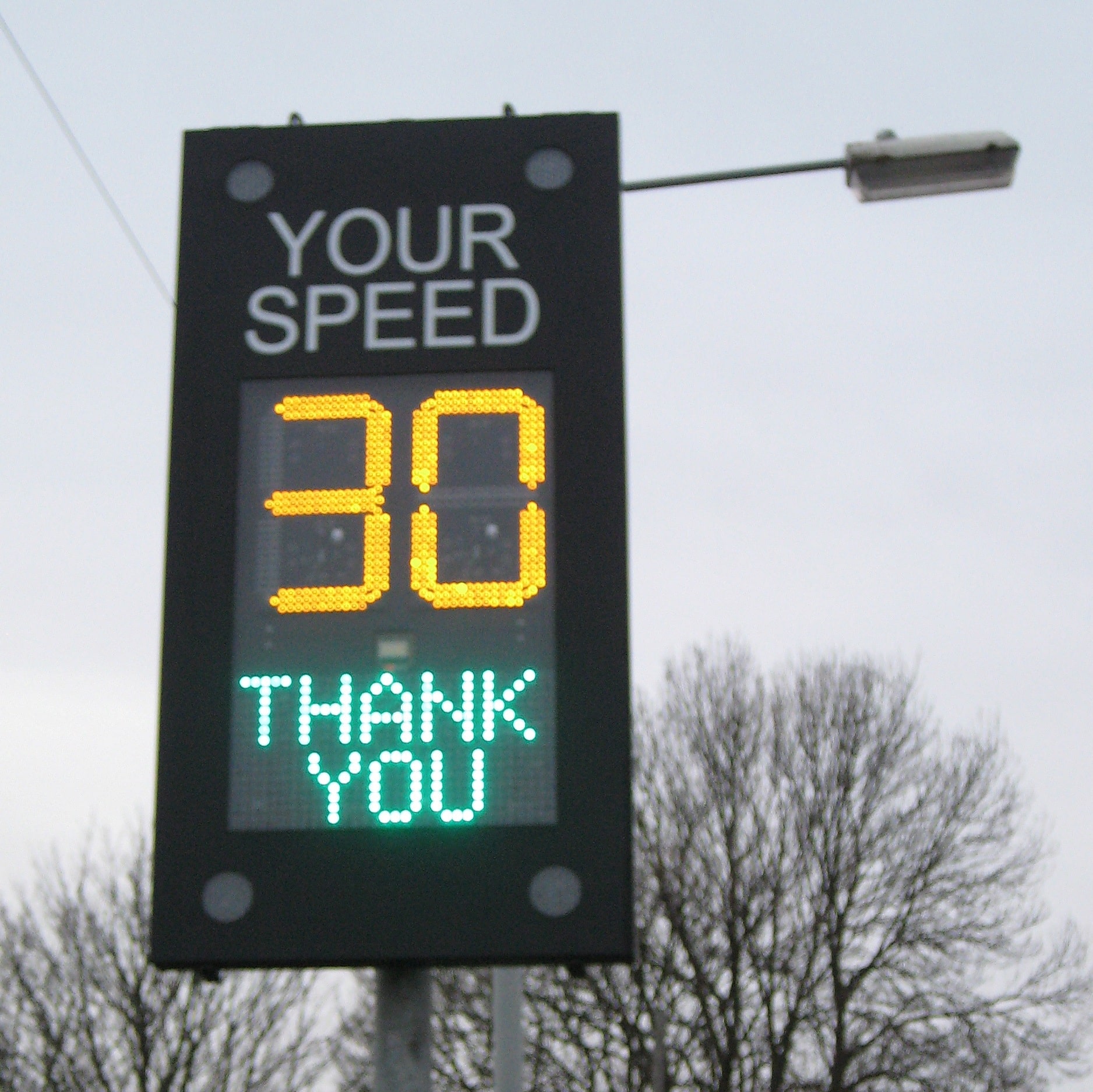A Guide to Vehicle Activated Speed Signs (VAS)
23rd June 2022
Vehicle Activated Speed Signs (VAS) are an eye-catching LED traffic signage solution. They are used for traffic management on both public and private highways across the UK. These devices have been proven to have a drastic impact on the road in regards to traffic calming and speed reductions. The following VAS guide aims to provide an overview of vehicle activated speed signs. This includes a detailed explanation of what VAS are and how they work, a brief history of VAS signage, and their applications.
What are Vehicle Activated Speed Signs?
Vehicle Activated Speed Signs are roadside LED signs which indicate whether or not an approaching vehicle is traveling above the road speed limit.There are 3 main variations of VAS, each with slightly different functionalities. These are; the Speed Limit Reminder (SLR), the Speed Indicator Device (SID), and the Smiley Activated Message (SAM).
When a vehicle approaches the sign, the internal radar will track their speed. If the motorist is exceeding the over the speed limit for that road, the sign will illuminate.
When illuminated, the SLR displays the correct speed limit for that road. The SLR shows the speed limit inside a red roundel with a “SLOW DOWN” message below in white.
Similarly, the SID will also display a “SLOW DOWN” message should a motorist be travelling above the speed limit. However, the numbers above will reflect the exact speed of the approaching vehicle. For vehicles below the speed limit, the sign will display their speed without the “SLOW DOWN” message.
The SAM also displays the speed at which any motorist is travelling. When detecting a speed below the limit, a green smiley face will illuminate below the displayed speed. Conversely, when detecting a speed above the limit, a red sad face will illuminate.
History of VAS Signage
“Speed sensing signs” were first trialled back in 1979 in Hampshire. Since then, continuous research and development has been conducted to improve and progress to what we know today as the modern VAS. Messagemaker Displays have been configuring and supplying state of the art VAS since 2011. VAS signage must conform to EN12966 and mirror the TSRGD standards, should they be permanently placed on a public highway. A huge emphasis has been placed on quality on the development of Messagemaker VAS range. We strive to ensure the most accurate and effective devices possible.
How do Vehicle Activated Speed Signs work?
There are three power options for VAS signs; battery, solar or mains powered.
Battery Powered Signs
In a battery powered unit, a lead acid battery within the device will feed into a charge controller. The charge controller then provides power to the device. On a full charge the battery’s power will last around 45,000 triggers. One trigger= one vehicle causing the device to power on. The battery must be removed periodically to be recharged. In order to minimise disruption, we offer extra batteries for purchase, allowing you to swap them out on the go.
Solar Powered Signs
A solar powered device will use two of the same lead acid batteries. However, charge is provided to the batteries via a solar panel mounted above the device. This which will then feed into the charge controller in the same way.
Mains Powered Signs
For a mains powered device, a slightly different power supply unit (PSU, as opposed to a charge controller) is mounted within the device. This will then be connected to a constant mains power source, such as a roadside lamp post, through a weatherproof cable and convert AC 240V to DC 12V.
Once the charge controller or PSU has power, this will then power a central control board within the sign which will illuminate the LED’s and power a vehicle detection radar. As a vehicle approaches the device, the vehicle detection radar will send information back to the control board which will then illuminate the LED’s accordingly. For example, if a radar on an SLR device detects a vehicle travelling above the speed limit, this will then signal the device to display the speed limit accompanied with the “SLOW DOWN” message. The speed limit, display time of the appropriate message, and the maximum trigger speed at which the sign is configured to, can be programmed and adjusted using three simple internal dials.
The Messagemaker team will pre-program your sign with the desired configuration before delivery.
What are the uses of VAS Signage?
VAS are predominately serve as bright and eye-catching visual reminders of speed limits and speed awareness for road users. Studies show that when motorists are aware of their speed, they are more likely to slow down. This leads to a reduction in speed and accidents, increasing local traffic safety.
Furthermore, some devices can come equipped with data capture functionality, allowing the user to download and analyse data as recorded from vehicles triggering the device. The user will be able to establish trends in regards passing vehicles, for example peak times at which vehicles may be speeding. This can then be used to put in place further traffic calming measures, such as variable speed limits during peak speeding hours.
How do Vehicle Activated Speed Signs impact road safety?
As concluded from a VAS device in-situ with data capture functionality, speed signs are highly effective in reducing the average speed of a motorist on a given road.
Over a two and a half week period, following the implementation of a Messagemaker Displays VAS on a road in a local village, recordings were taken on the 1st September, 7th September and 17th September. After analysing the data, both the average speeds and highest speeds dropped considerably. The average speed reduced from 39mph, to 38.8mph, to 28.8mph respectively. The Highest recorded speed also fell from 61.8mph, to 60.4mph, to 46.6mph respectively.
The vast reduction in speed a VAS can facilitate can lead to wider implications on accident prevention and road safety in general.
Advantages of Vehicle Activated Speed Signs
As previously mentioned, the visual reminder of a vehicles speed or the road speed limit can vastly impact the vehicle’s speed itself. This then can lead to a reduction in accidents and an increase in road safety.
Furthermore, speed signs can also allow the user to download and analyse data of motorists on the given road, meaning specific trends, such as peak speeding times, can be established. This then can be used to increase knowledge of the given road and implement further traffic calming methods if necessary.
To find out more, check out our range below!
 BACK
BACK